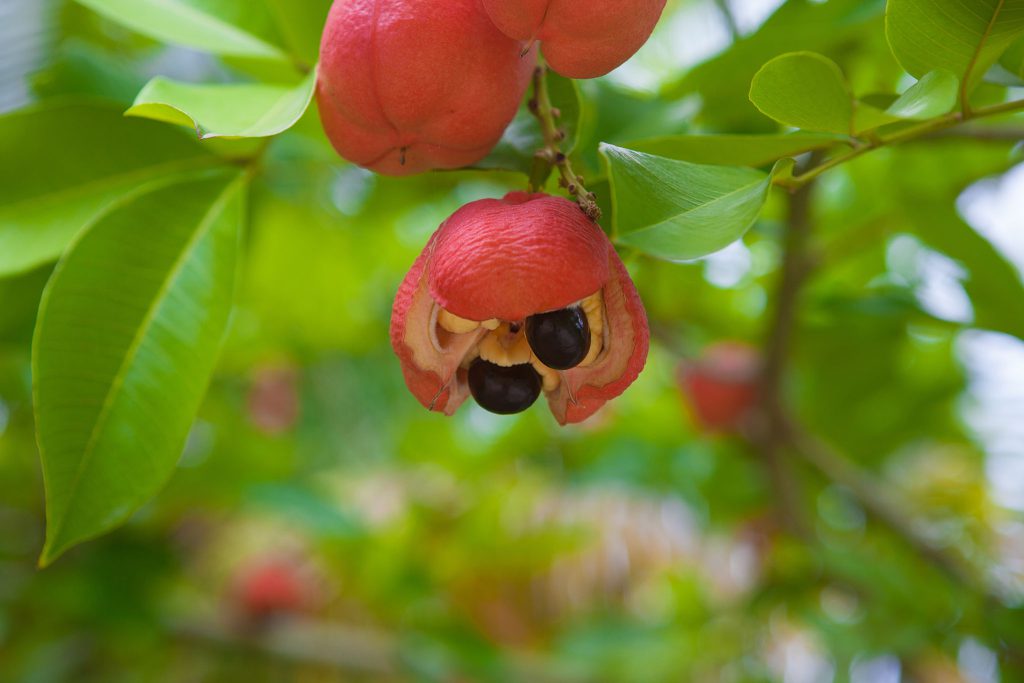Scientific name: Blighia sapida
Common names: Ackee, Achee, Akee
The Ackee tree, scientifically known as Blighia sapida, is not native to the US Virgin Islands but originates from tropical West Africa. Belonging to the soapberry family (Sapindaceae), this tree is extensively cultivated in tropical and subtropical regions for its edible fruit. The tree’s scientific name pays tribute to Captain William Bligh, who transported the fruit from Jamaica to the Royal Botanic Gardens in Kew, England, in 1793. The English common name “Ackee” is derived from the West African Akan term “akye fufo.” It is believed that the Ackee tree was introduced to St. Croix during Danish rule.

While the ackee fruit is primarily known for its culinary uses, various parts of the Ackee tree (Blighia sapida) have been used in traditional medicine in some regions. The bark, leaves, and seeds of the tree have been used in herbal remedies for various purposes. However, scientific evidence supporting the medicinal uses of the Ackee tree is limited, and caution should be exercised when using it for medicinal purposes.

